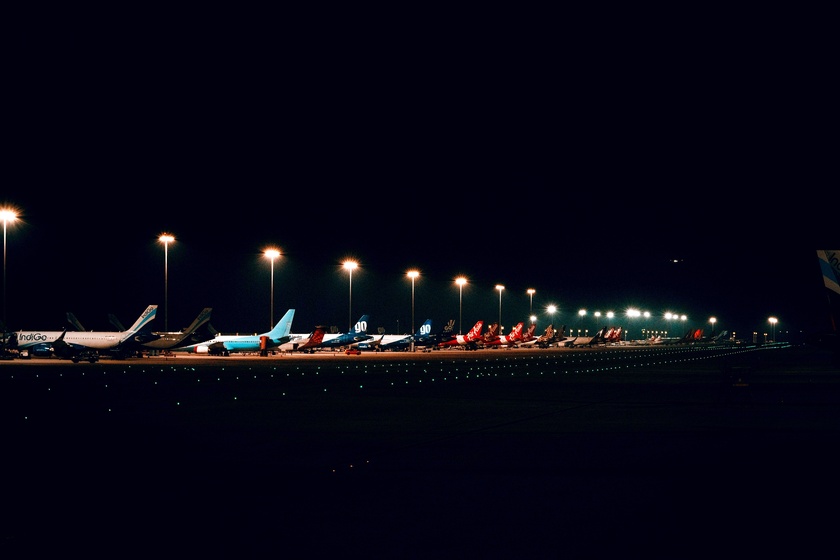
In continuing our series on Central Bank digital currencies (CBDCs), we would like to continue the discussion on their developments and potential effects on individuals and businesses in the economy.
We started this series with two articles ‘Central Bank Digital Currencies: Net Positive For Aviation?’ and ‘Central Bank Digital Currencies: The Argument for.’ Where we discussed the argument against, and the argument for CBDCs respectively. In the former article we stated that “On one hand, you have skeptical economists that believe that CBDCs will allow central banks to intricately control the market and allow for even greater inflation which destroys the wealth of individuals”. While in the latter we highlighted that “It is worth noting that there is not a flood of arguments - in the private sector - for CBDCs. Most of the arguments for CBDCs are from organizations such as the world economic forum and central banks themselves”.
There’s a lot of talk across nations and particularly within the United States about resisting the implementation of CBDCs because many believe it will be a net negative for individuals and the free market. To borrow a phraseology from the Borg from Star Trek, we ask: Could resistance be futile? In our On Aviation™ Podcast episode Central Bank Digital Currencies And The Aviation Industry, we addressed this issue – as it relates to the aviation industry – by stating in part that:
By mirroring the current trends of digital currencies in the private sector central banks can easily slide their CBDCs in because adaptation would be a lot easier because people are used to cryptocurrencies, even though a CBDC is not the same as a Bitcoin or Ethereum cryptocurrency. [timestamp 12:50]
Furthermore we stated that:
For the aviation industry they are somewhat reliant on the federal government for a lot of support during tough times, and if central bank digital currencies are launched during tough times then it will be very difficult for the aviation industry – particularly the airlines – to resist the implementation if they are used as catalysts. [timestamp 26:00]
With the aforementioned being said, while many small states have implemented CBDCs into their economy already, there is widespread – and growing – resistance to CBDCs. We can see resistance on both the individual and the state levels.In this week's full article, we will share some insights into the resistance against CBDCs and what it means for the economy in general and by extension the aviation industry.
For additional readings on central bank digital currency and the aviation industry, please see also: ‘Central Bank Digital Currencies: Net Positive For Aviation?’, ‘Central Bank Digital Currencies: The Argument for.’and ‘Central Bank Digital Currency: Nothing to Fear?’
You had better get ready for the world of central bank digital currencies (CBDCs) because they are coming. And they are coming fast.
According to a recent survey by the Bank for International Settlements (BIS), as many as 24 CBDCs could be in circulation by 2030.
This means even more government control over your money.
According to the BIS, 93% of the 86 central banks surveyed said they are conducting work on developing a CBDC. Meanwhile, “The uncertainty about short-term CBDC issuance is fading.”
The survey suggests there could be 15 retail and nine wholesale CBDCs circulating by 2030.
CBDCs exist as virtual banknotes or “coins” held in a digital wallet on a computer or smartphone. The difference between a central bank (government) digital currency and peer-to-peer electronic cash such as bitcoin is that the value of the digital currency is backed and controlled by the government, just like traditional fiat currency.
Central bank digital currencies are part of a broader “war on cash.”
A cashless society is sold on the promise of providing a safe, convenient, and more secure alternative to physical cash. We’re also told it will help stop dangerous criminals who like the intractability of cash.
But there is a darker side – the promise of control.
The elimination of cash creates the potential for the government to track and control consumer spending. Digital economies would also make it even easier for central banks to engage in manipulative monetary policies such as negative interest rates.
So far, the Bahamas, the Eastern Caribbean, Jamaica and Nigeria have issued retail CBDCs. Many other countries, including China, India, and the US have launched pilot programs. Based on the BIS survey, “More than half of central banks are conducting concrete experiments or working on a CBDC pilot.”
Last year, the Federal Reserve released a “discussion paper” examining the pros and cons of a potential US central bank digital dollar. According to the central bank’s website, there has been no decision on implementing a digital currency, but this pilot program reveals the idea is further along than most people realized.
Ultimately, it would take a congressional act to establish a digital dollar as legal tender.
Impact
Imagine if there was no cash. It would be impossible to hide even the smallest transaction from the government’s eyes. Something as simple as your morning trip to Starbucks wouldn’t be a secret from government officials. As Bloomberg put it in an article published when China launched a digital yuan pilot program in 2020, digital currency “offers China’s authorities a degree of control never possible with physical money.”
The government could even “turn off” an individual’s ability to make purchases. Bloomberg described just how much control a digital currency could give Chinese officials.
The PBOC has also indicated that it could put limits on the sizes of some transactions, or even require an appointment to make large ones. Some observers wonder whether payments could be linked to the emerging social-credit system, wherein citizens with exemplary behavior are ‘whitelisted’ for privileges, while those with criminal and other infractions find themselves left out. ‘China’s goal is not to make payments more convenient but to replace cash, so it can keep closer tabs on people than it already does,’ argues Aaron Brown, a crypto investor who writes for Bloomberg Opinion.”
Economist Thorsten Polleit outlined the potential for Big Brother-like government control with the advent of a digital euro in an article published by the Mises Wire. As he put it, “the path to becoming a surveillance state regime will accelerate considerably” if and when a digital currency is issued.
What Can We Do About It?
We probably can’t stop governments from issuing CBDCs, but we can avoid using them. Initially, they will coexist with cash. Simply rejecting CBDCs and sticking to cash will slow down implementation.
Individuals can also begin to establish barter relationships. If the government begins to restrict the use of cash, you can still do business using barter metals or non-government cryptocurrencies.
We should also encourage steps toward creating currency competition. The US states are in a position to do this by incentivizing the use of gold and silver as money.
Gold and silver have served as money for thousands of years. Digital platforms make it easier than ever to transact business using either metal. This opens the door to creating an environment of currency competition, and the states are in a position to lead the way.
For instance, a bill introduced in Texas this year would have created a state-issued gold-backed digital currency. The bill didn’t advance, but it started the discussion and opened the door for future action.
As Allain L. de la Motte argues, “While the dollar won’t be displaced overnight, fostering a competitive environment where it needs to compete with sound money backed by gold is the best option for all 50 states.”
States may also be able to hinder the use of CBDCs. For instance, laws recently enacted in Florida and Indiana ban the use of a central bank digital currency (CBDC) as money in those states by explicitly excluding a CBDC from the definition of money.
How such legislation would play out in practice against a CBDC, should the federal government attempt to implement one, is unknown. “A Roadblock” is likely the way this legislation to oppose a CBDC would play out, and it’s part of James Madison’s four-step blueprint for how states can stop federal programs.
Ultimately, we will only beat CBDCs through human action. And it’s important to start now – because the CBDC train is hurtling down the track.
_________________
Author:
Michael Maharrey serves as the national communications director for the Tenth Amendment Center and the managing editor of the SchiffGold website.
Michael is the author of four books. Constitution: Owner’s Manual examines various constitutional clauses and principles through the lens of the ratifying conventions. Our Last Hope: Rediscovering the Lost Path to Liberty makes the historical, philosophical and moral case for nullification. Smashing Myths- Understanding Madison’s Notes on Nullification, digs deep into James Madison’s views on nullification, focusing on his writing later in life. Finally, Michael joined Tenth Amendment Center executive director Michael Boldin in penning Nullification Objections: Dismantling the Opposition, a book that takes apart the common objections to nullification one at a time.
_____________________
This article was published on the SchiffGold website. on July 18, 2023, with the title “Better Get Ready; Central Bank Digital Currency Is Coming” The views expressed are the author’s, and do not constitute an endorsement by or necessarily represent the views of On Aviation™ or its affiliates.
Thank you for reading this week's On Aviation™ full article. What are your thoughts on Central Bank Digital Currency? Please share your thoughts in the comments below. Remember to check out our On Aviation™ Podcast and continue the conversation on our Twitter and Instagram.
Orlando - On Aviation™

















